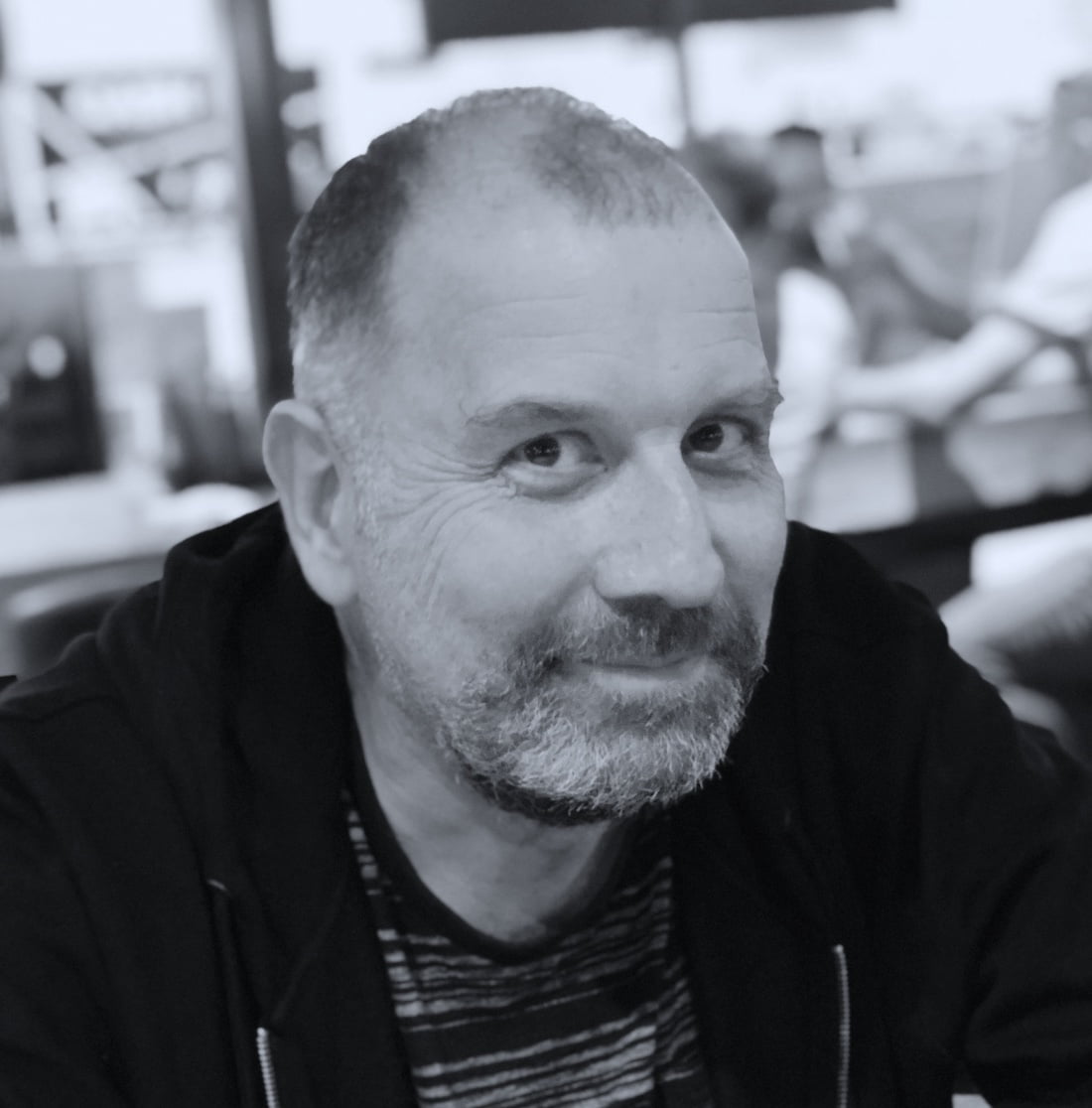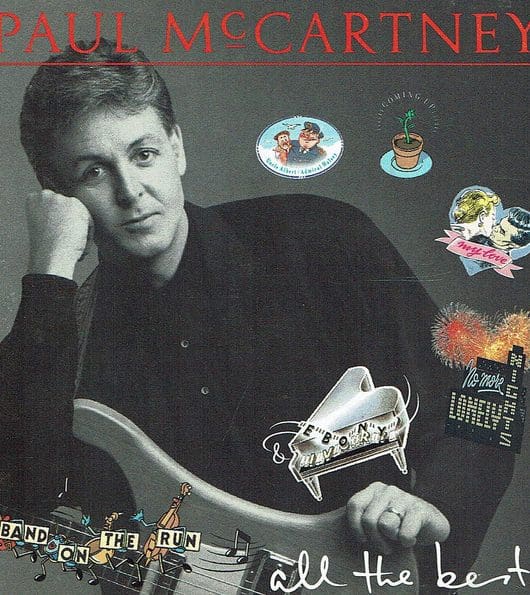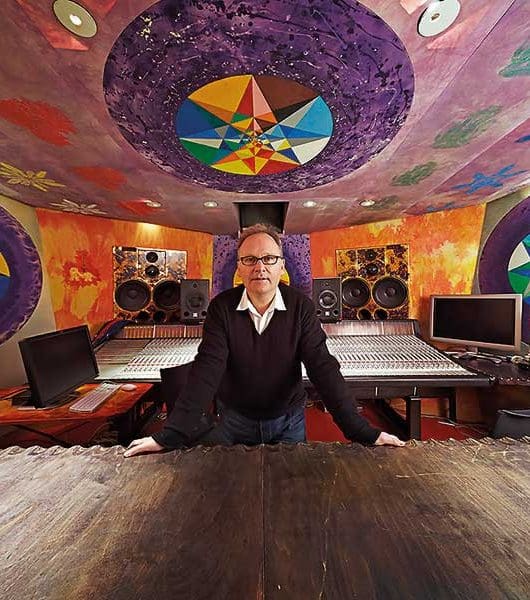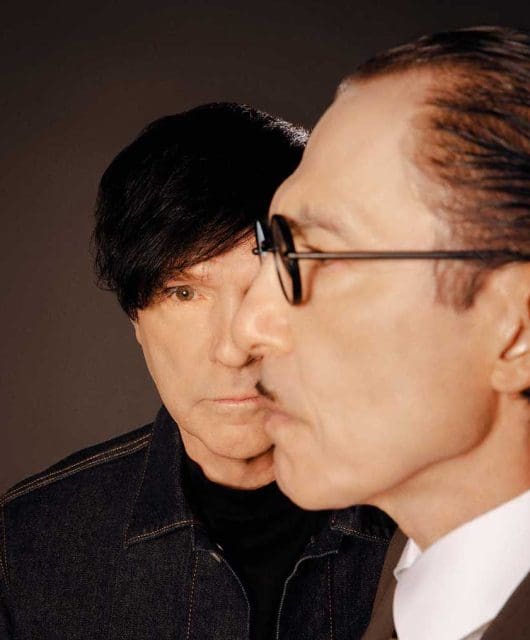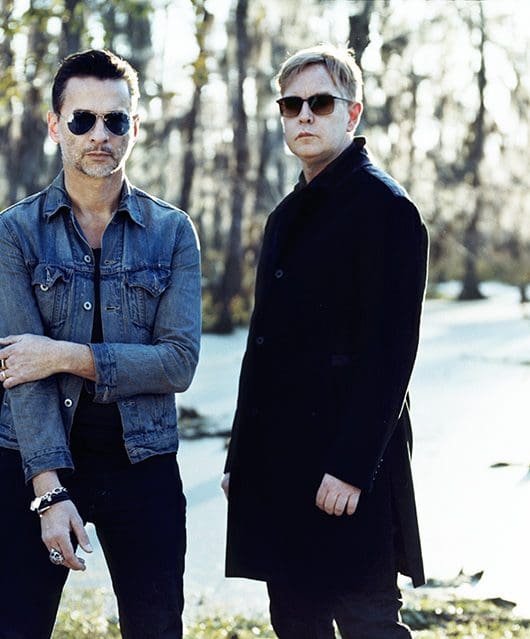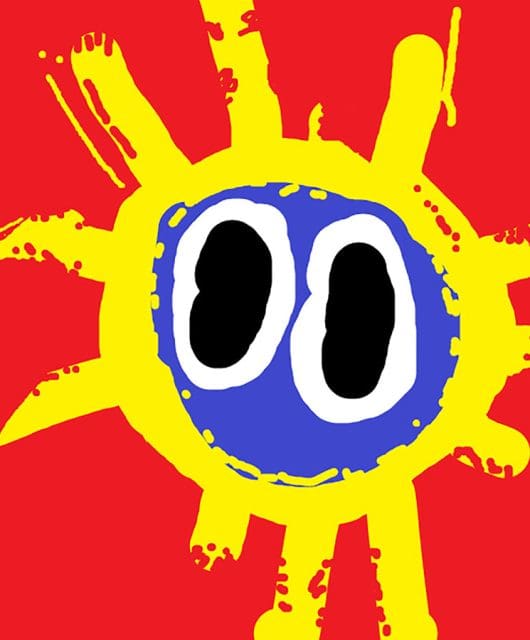Sawmills Studio Interview: They came, they Saw, they conquered
By Andy Jones | January 28, 2020
It’s an idyllic recording space in the middle of nowhere that can only be reached by boat or foot, yet the Sawmills Studio in Cornwall has attracted everyone from XTC to Oasis, who recorded their defining album, Definitely Maybe, there. Andy Jones traces the incredible history of the most unlikely hit-making studio in the UK…
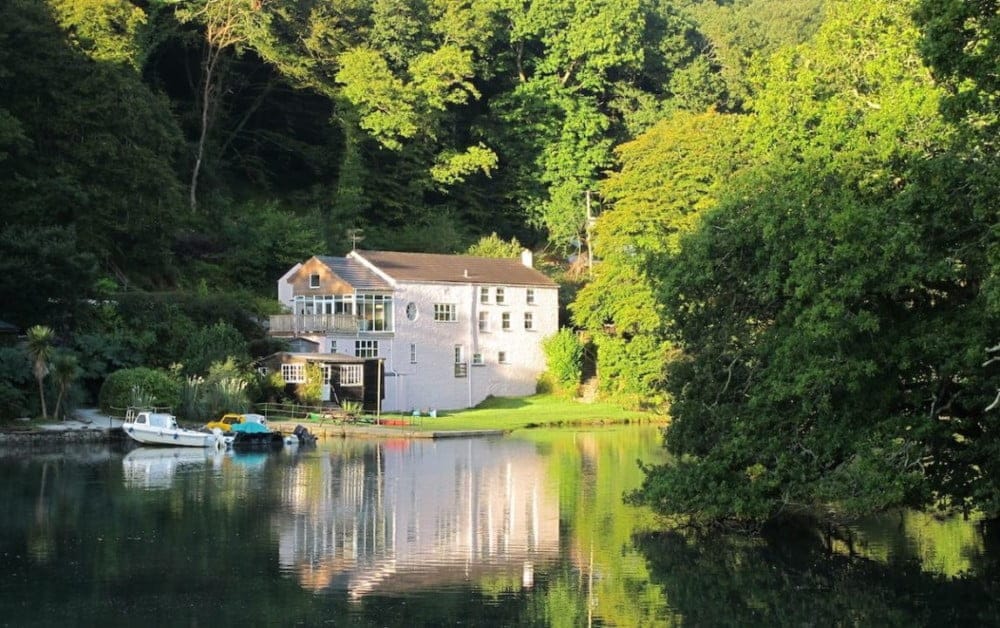
Most of the famous recording studios that we’ve featured in Classic Pop over the years have been in London. Of course, in the internet age, musicians can easily perform on one side of the world and be recorded on the other. But back in the studio heyday of the 70s and 80s, studios were near the record companies, if not owned by them, and they were all in London. Not Manchester, Glasgow, Cardiff, Belfast… and certainly not near Fowey, a small but lovely coastal town in Cornwall.
The Sawmills studio isn’t even in Fowey, or nearby Galant. It’s actually located between them in an idyllic location only accessible by boat, or a long forest walk. Yet this isolated location hasn’t stopped the studio becoming a recording icon, with the likes of Muse, Oasis, The Verve, Wet Wet Wet, and XTC using it to create some of the biggest albums of all time. So how did such a studio come to exist in the first place, let alone attract so many huge artists?
“That was all to do with a guy called Tony Cox, who bought the sawmill in the early 70s and set the studio up in 1974,” says Ruth Taylor, who has been studio manager at Sawmills for the best part of three decades. “He was a producer for Yes and bought the sawmills to live there. I think he thought, ‘Well this is my new house and I need a studio’. I don’t think there was a long-term plan!”
As Ruth points out, the studio is difficult enough to access now, let alone back in the 70s, when transport links from London to Cornwall were much more erratic. Yet Tony’s industry connections ensured a steady stream of big name visitors from the era.
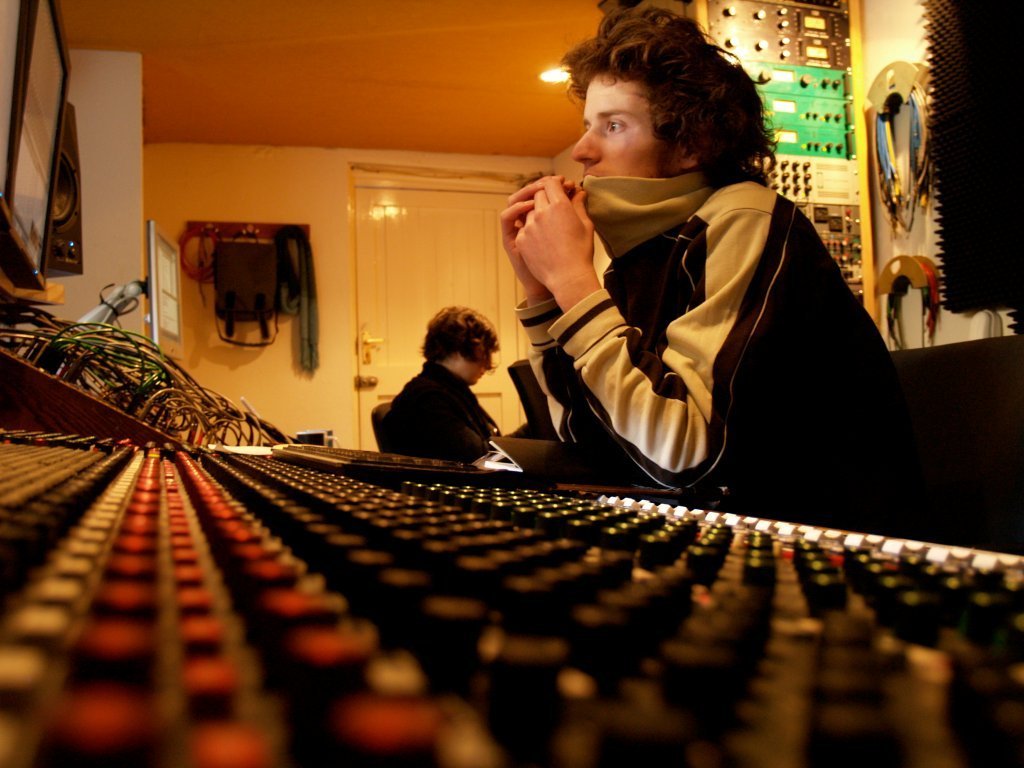 “XTC coming here was important… probably a turning point,” says Ruth, “but they also had people like The Sensational Alex Harvey Band and Fairport Convention. I know Tony didn’t expect the studios to still be here because he came to our 30th anniversary party a few years ago and was amazed that it has lasted that long! It is a bonkers place to run any business, let alone a recording studio. Every time there is any issue – the septic tank needing emptying or any building work – it’s a logistical nightmare! The Sawmills was one of the first residential studios in the UK, second after Rockfield I believe, so my job is a little like running a small hotel… in the middle of nowhere… that’s impossible to get to!”
“XTC coming here was important… probably a turning point,” says Ruth, “but they also had people like The Sensational Alex Harvey Band and Fairport Convention. I know Tony didn’t expect the studios to still be here because he came to our 30th anniversary party a few years ago and was amazed that it has lasted that long! It is a bonkers place to run any business, let alone a recording studio. Every time there is any issue – the septic tank needing emptying or any building work – it’s a logistical nightmare! The Sawmills was one of the first residential studios in the UK, second after Rockfield I believe, so my job is a little like running a small hotel… in the middle of nowhere… that’s impossible to get to!”
In the 80s, Tony sold the studio to Simon Fraser, who would go into partnership with the current owner, Dennis Smith. “It started picking up again, especially when The Stone Roses and John Leckie came in,” Ruth explains. “That kickstarted the next phase of the studio and John has been down here many times since.”
With the likes of Leckie and fellow production legend John Cornfield at the controls, word quickly spread about this magical recording space, miles away from anywhere. Soon, the studio became one of the busiest recording spaces in the UK.
 “When I look back,” says Ruth, “I was hanging around with a lot of people who went on to be famous but, of course, I had no clue then! We had Supergrass, Muse, Oasis, The Verve and so on. There were also people like Cerys Matthews and Lauren Laverne who went on to be famous presenters, as well as friends of bands like David Walliams, who was a mate of The Bluetones. But at the time, they were just more people coming through the doors – we were so busy.”
“When I look back,” says Ruth, “I was hanging around with a lot of people who went on to be famous but, of course, I had no clue then! We had Supergrass, Muse, Oasis, The Verve and so on. There were also people like Cerys Matthews and Lauren Laverne who went on to be famous presenters, as well as friends of bands like David Walliams, who was a mate of The Bluetones. But at the time, they were just more people coming through the doors – we were so busy.”
A Recording Oasis
The Oasis debut Definitely Maybe is the standout album of its era and Ruth vividly remembers the band’s visit largely because of the buzz surrounding it.
“If big things were expected from a band, you would get more record company visits, but they’d usually get the train down, miss the tide and then have to walk – so it had to be worth their while. With Oasis, there was a lot more activity.”
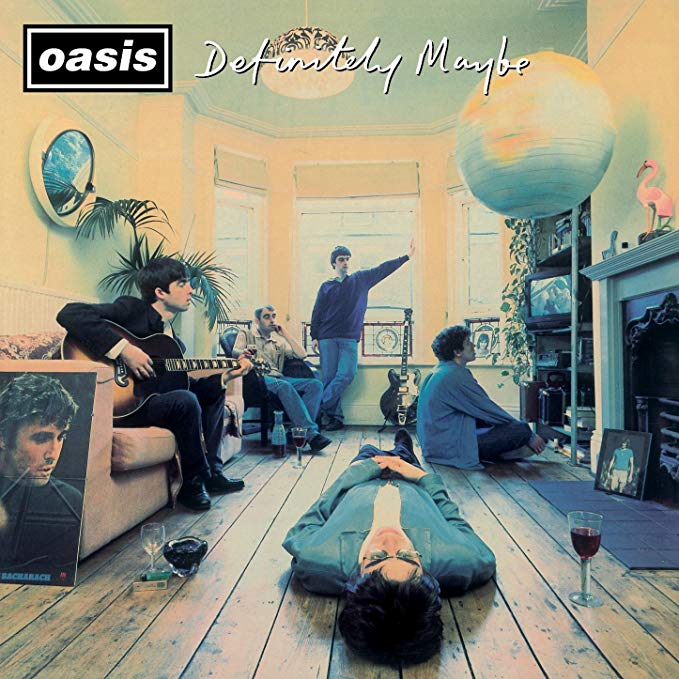 “I’m from Manchester so they [Oasis] were only just down the road from me. Liam played me the first single [Supersonic]. It hadn’t been recorded at Sawmills but I remember him saying, ‘Listen to this, Ruth, we’re gonna be huge’, and me thinking, ‘Yeah, yeah’. When he said things like that, it was always a bit tongue-in-cheek, but obviously he was completely correct! I would have heard most of the album at the time, but I don’t remember what I thought! There were so many bands coming in at the time. I would often think, ‘Well, that’s quite good’, but most of the time, I couldn’t tell what was going to be a hit.”
“I’m from Manchester so they [Oasis] were only just down the road from me. Liam played me the first single [Supersonic]. It hadn’t been recorded at Sawmills but I remember him saying, ‘Listen to this, Ruth, we’re gonna be huge’, and me thinking, ‘Yeah, yeah’. When he said things like that, it was always a bit tongue-in-cheek, but obviously he was completely correct! I would have heard most of the album at the time, but I don’t remember what I thought! There were so many bands coming in at the time. I would often think, ‘Well, that’s quite good’, but most of the time, I couldn’t tell what was going to be a hit.”
Of course, Definitely Maybe definitely was a hit, and would propel the band skywards, but they would return to Sawmills almost exactly 10 years later. “I think they thought that they could recreate Definitely Maybe by coming back to exactly the same studio at exactly the same time of year,” explains Ruth. “The second time they came back, they were very much unchanged. They didn’t actually release anything [this time]. By then, they were massively famous and everyone knew who they were. It was quite surreal.”
Fowey Tales
Sawmills’ impact on the local community has led to many tall tales, usually involving drunken pop stars and ‘the Sawmills boat’, the main form of transport to and from the studio. There’s The Farm crashing said boat in Fowey, (not true). And the one about the famous Sawmills race, where bands race (normally naked) across the mudflats at low tide (possibly true).
Ruth laughs: “When I hear the stories, they’ve changed out of all recognition to what actually happened, but there have been lots of incidents. We’ve never lost anyone in the river, although people have gone in, but generally only because they were messing about. One band who shall remain nameless tried to take the boat to France! They only got to the other side of the creek and were banked on the mud when I got called at 3am to rescue them!”
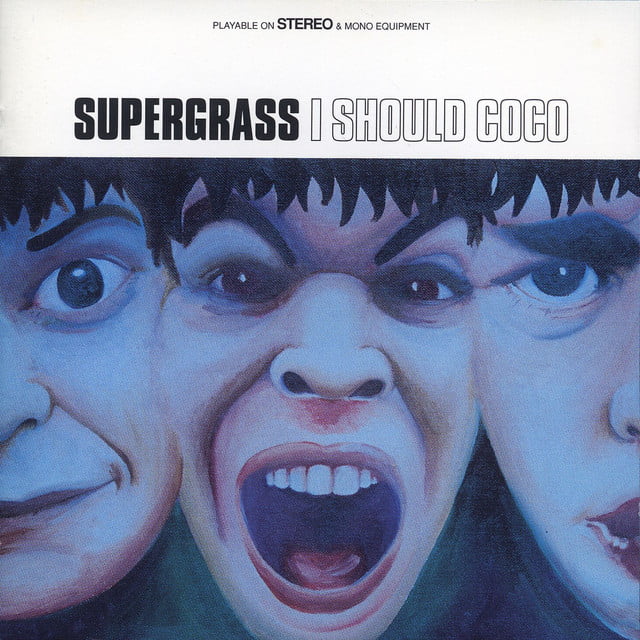 Sawmills’ location might cause practical problems but it has always offered its famous visitors high levels of privacy. Yet even isolation hasn’t deterred every hardcore fan…
Sawmills’ location might cause practical problems but it has always offered its famous visitors high levels of privacy. Yet even isolation hasn’t deterred every hardcore fan…
“It wasn’t until Robert Plant visited that I first experienced fans,” Ruth explains. “Since he is so well established, a lot of the slightly older people in the area knew who he was and I remember we suddenly had random people fishing in the creek, while the local pub was very busy with people wearing Led Zeppelin t-shirts! We would also have odd people who would just turn up, but they would have to be determined to walk all the way here. We never got any badly behaved fans and they would usually be happy with a little glimpse and then go off again.”
The isolation of the studio and its focus on creativity has certainly helped in the recording of many iconic albums, and also to a very harmonious atmosphere, with Ruth struggling to recall many negative events.
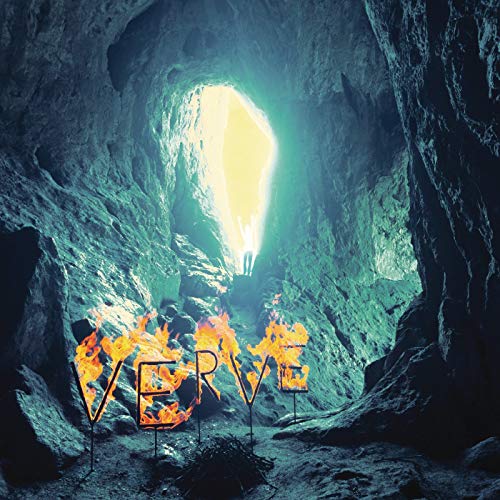 “It would be easier to say who you didn’t get on with,” she laughs. “Sometimes, you might get the odd band where you’d initially think, ‘I’m not sure I like them’ but then after a few days, it’s like being stuck on an island, you just get on with people. Okay, there was one, but I’m not going to tell you who… they know who they are. We were glad to see the back of them but that was just one occasion, out of all the bands who have been here.
“It would be easier to say who you didn’t get on with,” she laughs. “Sometimes, you might get the odd band where you’d initially think, ‘I’m not sure I like them’ but then after a few days, it’s like being stuck on an island, you just get on with people. Okay, there was one, but I’m not going to tell you who… they know who they are. We were glad to see the back of them but that was just one occasion, out of all the bands who have been here.
“There was only one other time where a band fell out with the producer, to the point that they wouldn’t even talk. Bands would have artistic differences, of course, and there was a bit of storming out and door slamming. No one has stormed off in the boat but one time, a lead singer went for a walk and just didn’t come back! The next thing we found out, he was in London. But the creative process can be difficult and those things can happen.”
The Fame Game
“It was funny going on a pub crawl with Oasis the second time they were here,” Ruth recalls, “just walking into pubs and watching people’s faces. I went out with them maybe three of four times around Fowey and Par. That was good fun.
“I’ve always enjoyed the people-watching at Sawmills more than anything else. I was a bystander but just watching people was interesting. People changing as they got a little bit more famous and, more importantly, the people around them changing. People in record companies changing around bands… the sycophantic behaviour!”
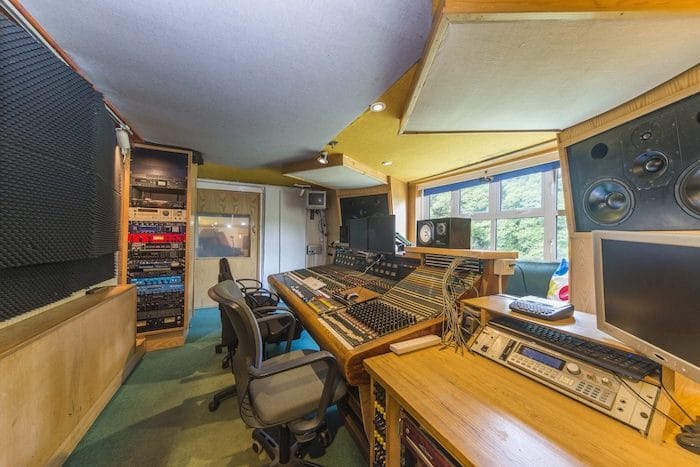 Like recording studios everywhere, Sawmills has had to adapt to survive. Being in such an incredible location, the obvious route to letting out part of the studio as holiday accommodation has proven to be hugely successful.
Like recording studios everywhere, Sawmills has had to adapt to survive. Being in such an incredible location, the obvious route to letting out part of the studio as holiday accommodation has proven to be hugely successful.
“We can have up to 21 people stay and we get a lot of conferences and corporate dos, as well as writers’ workshops and other creative events. Creative people don’t mind that you have to get on a boat and the lack of shops or other distractions helps them focus.”
While the studio is still attracting big named artists, Ruth has so far resisted the huge temptation to turn the site into a Mecca for fans and VIP tours, at least officially anyway. “People have suggested it,” she says, “but the funny thing is that I’ve been doing them anyway, just for free! Pretty much everyone who stays in the accommodation wants to see the studio and the space that all of these albums were recorded in, but I do forget all the stories sometimes. I should jot them all down before I completely forget them.”
Maybe there’s a Sawmills book in there somewhere?
“Maybe,” she laughs, “but I might have to wait for some of the artists to die first!”
Andy Jones
Click here to read more exclusive Classic Pop interviews…
